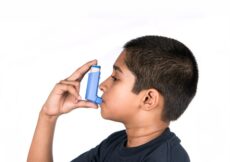February 9th, 2022
(Click image to enlarge)
The CDC’s most recent weekly update on seasonal influenza brought virus-weary health providers some very good news:
Influenza activity has decreased in recent weeks, but sporadic activity continues across the country.
It looks like the 2021-22 influenza season peaked on week 51, a few days before Christmas. Since then, the numbers of new cases, visits to doctors’ offices and clinics, and hospital admissions have been dropping steadily.
By any standard, the current flu season will go down as one of the mildest on record, though the numbers aren’t as low as last year’s, when students and workers were forced to work remotely, and most Americans were following COVID precautions by wearing face masks and keeping physically distant from one another. So far, the CDC estimates there have been 2.1 million flu illnesses in the United States, 21,000 hospitalizations, and 1,200 deaths, including 5 children. By contrast, the 2017-18 flu outbreak was the deadliest in 4 decades, killing about 80,000 Americans, including 180 children.
Fewer Americans received their annual flu vaccine this year compared to last, leaving millions of Americans unprepared to fight the virus. The CDC reminds everyone that it’s not too late to get one:
An annual flu vaccine is the best way to protect against flu and its potentially serious complications. CDC continues to recommend that everyone ages 6 months and older get a flu vaccine as long as flu activity continues.
The vaccine appears to be reasonably matched against the dominant influenza strain that has been circulating around the country, and perhaps not the “major mismatch” that was feared last December:
The majority of influenza viruses detected are A(H3N2). Most of the H3N2 viruses identified so far this season are genetically closely related to the vaccine virus. Some viruses show antigenic differences that developed as H3N2 viruses have continued to evolve.
Undoubtedly, using layers of prevention to avoid transmission of coronavirus — wearing face masks, avoiding crowded indoor spaces, staying away from people who are sick — has also helped prevent the spread of influenza and other respiratory viruses usually seen during cold weather months. Hopefully, when the pandemic is finally over and done with, we will take the lessons we’ve learned over the past two very difficult years and apply them to keep everyone safe and sound during cold and flu season.




































